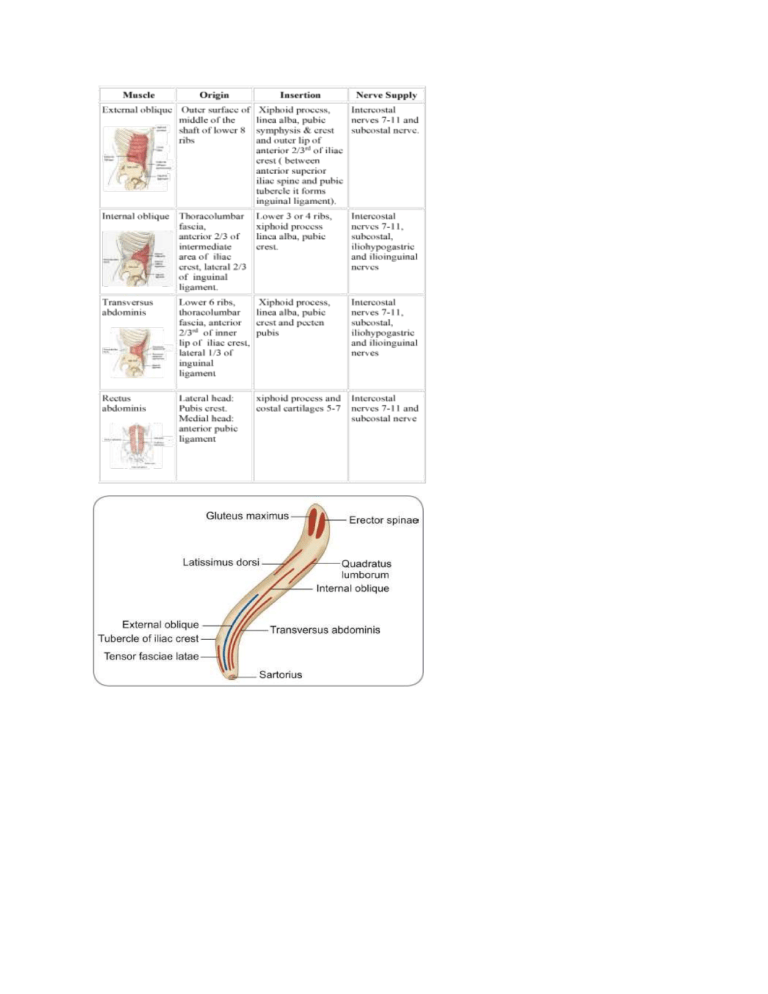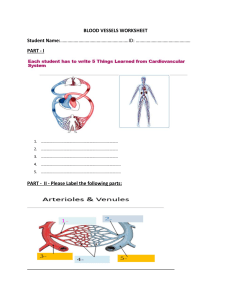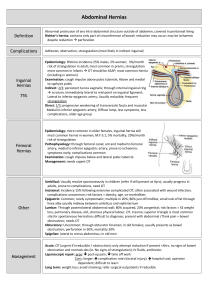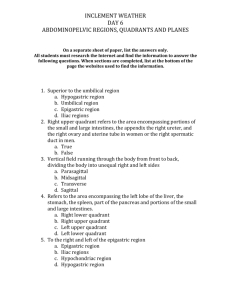
The most notable anterior abdominal wall arteries are the epigastric vessels and the circumflex iliac vessels. Both pairs of vessels can be further classified into superficial and deep vessels. The deep epigastric vessels include the superior and inferior epigastric arteries and veins. The superior epigastric artery originates from the internal mammary artery and descends through the thorax into the rectus muscle, where it anastomoses with the inferior epigastric artery. The superior epigastric artery is accompanied by two superior epigastric veins. The deep inferior epigastric artery arises from the external iliac artery, just above the inguinal ligament. The inferior epigastric artery and vein travel in a medial and oblique fashion along the peritoneum to pierce the transversalis fascia and the rectus muscle. Owing to the absence of the posterior rectus sheath below the arcuate line, the inferior epigastric vessels can be seen within the lateral umbilical fold (Table 1.4) [6]. Accidental laceration of these deep vessels may result in life-threatening hemorrhage that must be swiftly occluded using electrosurgery or sutures (Fig. 1.6) [7]. In contrast, the superficial epigastric artery originates from the femoral artery and courses through the superficial fascia toward the umbilicus. Prior to placing secondary laparoscopic trocars, the superficial epigastric vessels are often identified by intra-abdominal transillumination in order to avoid vessel injuries (Table 1.5) [8]. Vascular trauma to the superficial epigastric vessels may result in a hematoma or abscess and, on rare cases, may even expand to the labia majora [9]. The circumflex iliac arteries consist of the deep and superficial circumflex iliac arteries. They arise from the femoral and external iliac arteries, respectively. Table 1.4 Basic principle: decrease the risk of vascular injury Always identify the deep, inferior epigastric vessels as they course along the parietal peritoneum. The deep vessels are located lateral to the medial umbilical folds but medial to the deep inguinal ring. Identify the deep inguinal ring by locating where the round ligament enters the inguinal canal and continues into the deep inguinal ring. If the deep epigastric vessels are obscured by excess tissue and cannot be easily identified, one of two strategies may be employed: 1. Place the trocars approximately 8 cm lateral to the midline and 5 cm above the pubic symphysis [6]. These right and left anterior abdominal areas approximate “McBurney’s point” and “Hurd’s point,” respectively. Or, 2. Place the trocar medial to the medial umbilical fold, as the inferior epigastrics are consistently lateral to these. One problem with positioning the trocar this medially, however, is poor access to the adnexa. Table 1.5 Basic principle: identify the vasculature To avoid vessel injury, transilluminate the superficial epigastric and circumflex vessels, and identify their course prior to placing secondary trocars.






